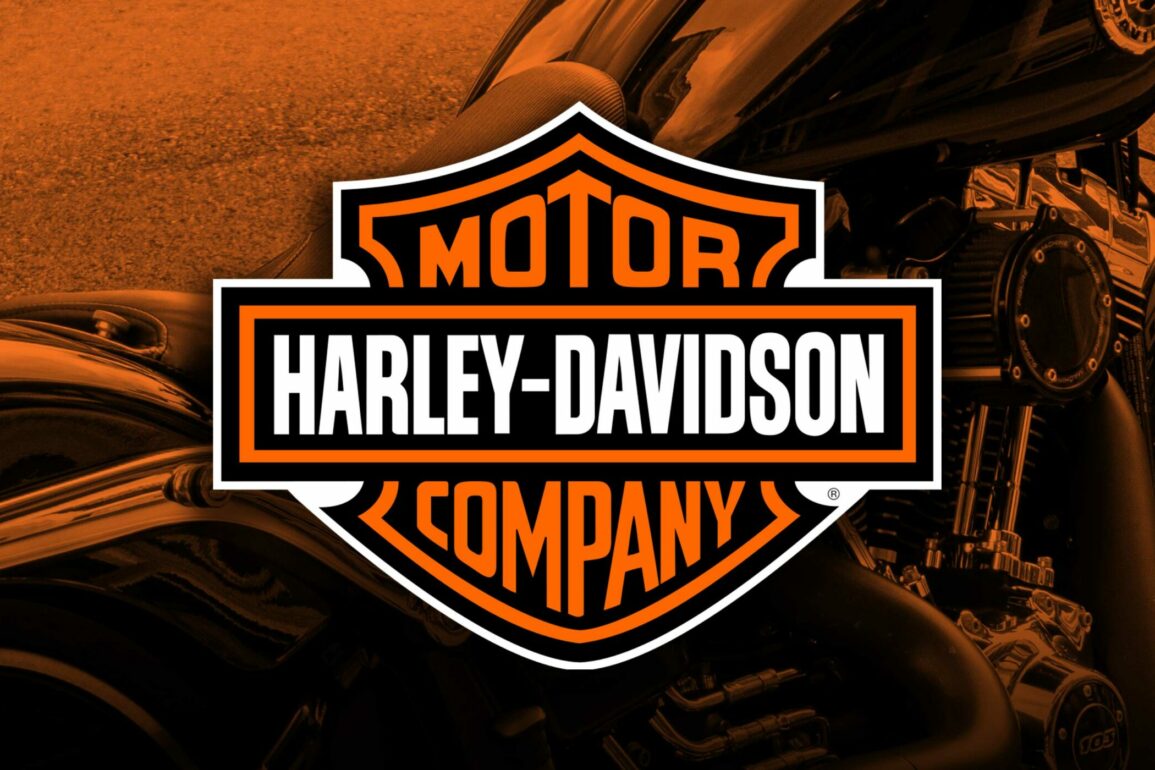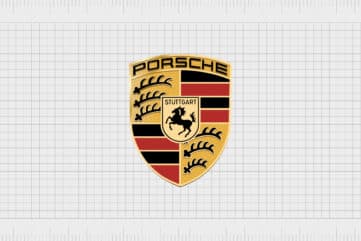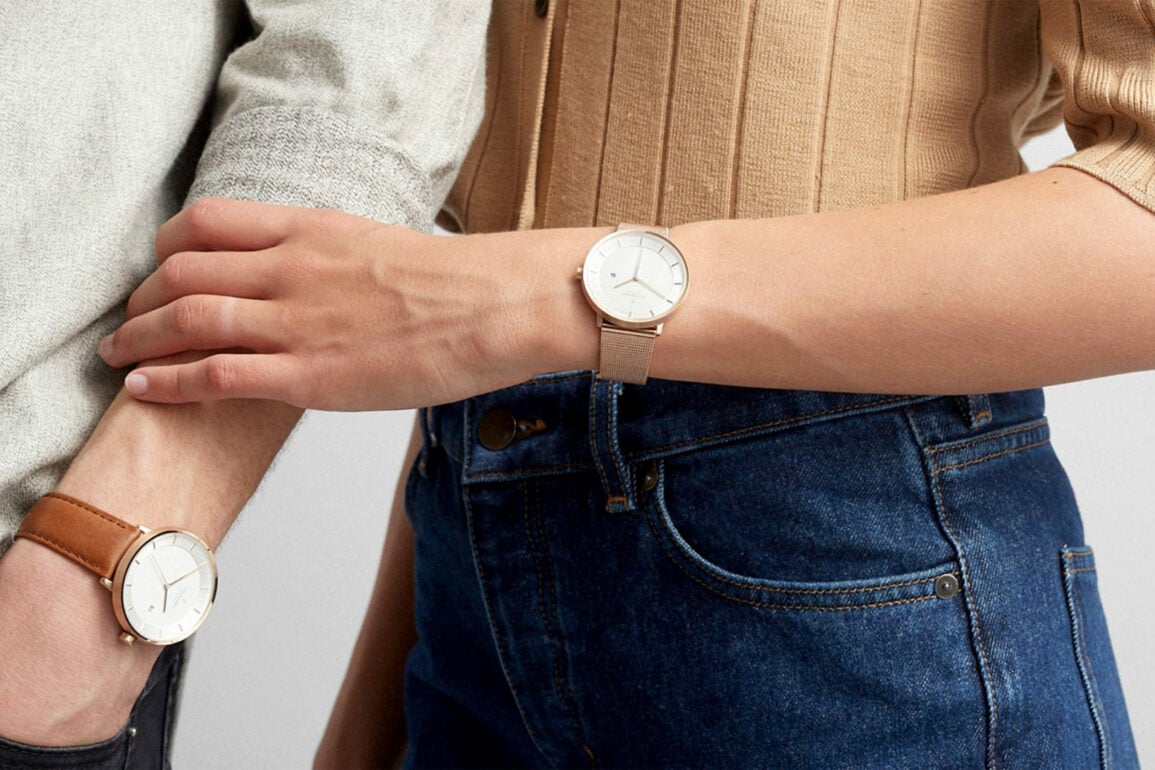Born in the USA: Get your motor running… The Harley Davidson brand story

Over the years, we’ve seen countless powerful brands emerge out of the United States.
America is home to huge corporations spanning all the way from Coca-Cola, to McDonalds, Nike, and Target. However, one thing worth noting about each of these companies, is that they all had significant marketing budgets. Deep pockets ensure you have the resources to create the image, and reputation your customers want to see.
What’s far rarer in the world of business, is a company that knows how to accomplish exceptional brand recognition, through strong values, an exceptional identity, and an unforgettable approach to customer loyalty.
The brand awareness that belongs to Harley Davidson has been earned through decades of hard work, and determination. Though this company has teetered on the brink of bankruptcy, struggled with marketing mishaps, and risked everything more than once, it continues to be one of the most powerful brands in history.
Whether you’re a die-hard rider with the Harley Davidson logo tattooed on your arm, or you’re someone who can simply admire the design efforts of these unforgettable hogs, there’s no denying the fact that few motorcycle ventures have achieved the fame and success of this 114-year-old giant.
To begin our new series celebrating American organisations “Born in the USA”, we’ll be looking at the Harley Davidson branding strategy closely, and discovering how this incredible business could help you to map your journey to success.
Let’s ride…

Born to be wild: Harley Davidson history
Harley Davidson is arguably the world’s most iconic motorcycle brand. However, it might surprise you to learn that the Harley Davidson brand story didn’t start with fame and fortune. The company was founded in a small shed by brothers Walter and Arthur Davidson, and William Harley during 1903.
When the Harley Davidson history began, the organisation was just one of the many to begin selling motorcycles across the country. Today, the Harley Davidson brand is one of the most well-known in history.
The century-old Harley Davidson story began in 1901, with a design for a small engine that could attach to a standard bicycle frame. William Harley refined this design over the years with his friends Arthur and William Davidson, to develop the first Harley Davidson bike in 1903. Unfortunately, the first model was rejected as being too weak to handle the roads of Milwaukee. However, that didn’t stop the team from investing in their first factory in 1906.
By 1907, Harley had achieved an engineering degree, and the factory had begun to develop 150 motorcycles a year. During that time, the signature V-Twin engine was born. The coming years saw production increase dramatically, with 16,284 units recorded in 1914.

When the going gets tough…
Of course, like many brands in need of guidance, this famous motorcycle company encountered a few roadblocks on the path to success. To say that the Harley Davidson history had taken a bleak turn by 1981 would be a serious understatement. Japanese companies had started to outsell the business with better pricing, and the Harley Davidson brand bikes had lost the quality that made them so appealing.
The executives were faced with a simple choice: drastically improve their motorcycle quality and satisfy their customers, or go out of business. Quickly, the Harley Davidson brand started to copy Japanese quality control and production techniques, releasing a new engine that abolished oil leaks and other common problems.
Since Harley couldn’t afford a traditional advertising campaign at this stage, they announced the launch of the Harley Owners Group in 1983 – a way to reconnect the Harley brand with customers through affinity. Though HOG wasn’t accepted initially, it eventually started to earn more customers, and reposition the Harley Davidson brand story of one of customer loyalty and success.

Harley Davidson branding: The power of personality
Perhaps one of the most important lessons any company can learn from Harley Davidson branding is the fact that you need to be willing to adapt to your customer’s needs while keeping your essential values in mind. Harley risked everything when they stopped delivering quality in their bikes, so when they planned to start marketing themselves again, they needed a personality and image that would regain their audience’s trust.
Fortunately, the Harley Davidson image managed to overcome the problems it had around connections with motorcycle gangs and potentially poor quality, by engaging in some brand refreshing efforts. By finding their own set of unique values, the Harley Davidson brand ensured that they could change effectively with the needs and trends of the time while remaining true to a distinct identity.
The Harley Davidson brand values
When the iconic Harley motorcycle company began, it suffered from a problem that’s common with many startup businesses, a lack of identity. The Harley Davidson brand promise had yet to be established, which meant that the business struggled to compete with other organisations in their industry.
Fortunately, after some time, the Harley Davidson brand manifesto began to establish itself, allowing the founders and executives to create marketing and communication strategies that could truly speak to their audience. Today, the Harley Davidson brand values that drive the company forward are:
- Freedom: Harley promises its customers a lifestyle that ensures they can go anywhere, any time they want to – without restrictions.
- Heritage: Harley Davidson is distinctly American, they rally the American flag in their marketing, and appeal to their long-standing history in the USA.
- Community: The Harley Davidson brand relies on customer loyalty to thrive. Word of mouth marketing and a cult-like community of followers gives their business strength.
- Quality: Though the business had a few quality hiccups along the way, customers can now rest assured that if they buy a Harley, they’re getting an incredible ride.
The Harley Davidson logo
Alongside their brand values, Harley Davidson has worked on building a distinct identity as the world’s most compelling motorcycle company. They’ve accomplished this in several ways, both from a visual, and verbal perspective. Today, Harley Davidson isn’t just a name – it’s a legend evoking images of long highways and freedom in the eyes of its customers.
Part of what makes the Harley Davidson brand identity so compelling is its company logo. Harley Davidson spent $40 million of their marketing budget on logo design in 2010 alone, but the truth is that the image used to represent the business hasn’t changed much over the years. The first logo was assembled in 1903, and it spawned the “Bar and Shield” logo idea.

In 1953, the Harley Davidson logo evolved with an elaborate new “V” intended to honour the engine style that made the company so famous.

Eventually, the most recent logo was introduced, with a combination of bold lines and unique typography. The logo is confident and masculine just like the brand itself, and the use of the bright orange colouring in the latest version speaks to the company’s fierce creativity.

Perhaps the most interesting thing to remember about the Harley Davidson logo is that every legitimate Harley dealership has its own version. This helps to highlight the brand’s focus on community, and the fact that encourages every person with a Harley Davidson to use their motorcycle when creating their own adventures.
The Harley Davidson brand personality
The Harley Davidson brand personality is perhaps one of the most compelling elements of the company. Although Harley has been described with countless words like masculinity, adventure, and patriotism, the most dominant trait worth noting is Harley Davidson’s rebellious spirit.
The Harley Davidson brand is built around the idea of freedom. Both freedom from mainstream concerns, and the freedom to travel in a brand-new way. This is supported by the unique bright orange colouring in the logo design, and the bold design of the motorcycles themselves, which are historically huge, chunky, and confident-looking.
It’s Harley Davidson’s personality that informs everything from its tone of voice to its choices in terms of brand positioning and marketing.
You only need to look at the powerful words and imagery on the Harley Davidson twitter account to catch a glimpse of the identity the company has tried to create. At the same time, the Harley Davidson brand positioning statement links back to their no-compromise identity, defining them as the only manufacturer daring enough to make “big, loud motorcycles”, in an age of limited personal freedoms.

Harley Davidson brand extension: A product too far?
No matter how cautious you might be with your branding efforts, it’s worth noting that we all lose our way at times – even iconic giants like the Harley Davidson brand.
Back in the 1990s, people around the world craved custom Harley bikes, the company had achieved exceptional brand awareness, positioning their product as the symbol of a generation. The Harley Davidson brand image was so powerful, that the company achieved cult status, with people from all backgrounds coming together to celebrate the beauty and majesty of the unique bikes.
In the 90s, the stock prices were soaring, and Harley owners even had the brand logo tattooed somewhere on their skin, showcasing the fact that followers of the Harley Davidson brand weren’t just buying a product – they were investing in a set of shared values, a heritage, and a lifestyle.
With that in mind, it made sense for the company to try and capitalise on their brand, introducing a range of accessories to match the bike, all the way from key chains, to socks, ornaments and more. Unfortunately, instead of turning out to be a huge success, the new products ended up having a negative impact on the Harley Davidson name.
Even though motorbike apparel seemed to work well with the Harley Davidson brand identity and cultural following, the business seemed to lose focus. The brand started to extend itself too far, introducing almost random products like perfumes, aftershaves, and wine coolers. Even the most loyal fans reacted poorly, feeling as though the tough Harley Davidson personality was being overlooked.
The Harley Davidson brand learned first-hand how important it is to focus on building the right marketing campaigns for their customers. Their loyal audience wanted strong bikes, and beautiful accessories that complemented the brand was no problem. Unfortunately, baby clothes and ties seemingly went too far.
Like many companies that came before, and after it, Harley Davidson learned an important lesson about growing a business. More products don’t necessarily mean more revenue and a better reputation.
Harley Davidson brand loyalty: Moving beyond stereotypes
Harley Davidson spent a lot of time building an identity for itself that focused on traits like masculinity, power, and freedom. Unfortunately, that rebellious image came with some baggage too. Some customers continued to associate Harley bikes with outlaw gangs from the past, and the company found that it was struggling to earn the attention of new customers.
As the marketplace continued to change over the decades, the Harley Davidson brand image needed to start changing with it. Harley learned that if they wanted to appeal to middle-class customers, millennials, and more than just a single user persona, they needed to start softening their rough edges and repositioning their products.
Though much of the “outlaw” biker image around the Harley Davidson brand personality remains the same, Harley’s customers have now expanded. The company is now the number one seller of motorcycles to everyone from young adults, to baby boomers, women, and more. The company’s approach to a varied customer base is even what inspired their “#StereotypicalHarley” campaign.
According to the head of the Harley Davidson marketing group, many of the brand’s main creative ideas are now sourced from their social media pages. This process allows the brand to adapt to the needs of a new and growing audience while maintaining their heritage and their position as a historical motorcycle brand.
In an effort to capture younger audiences, without completely alienating their original fanbase, Harley recently began to adopt the principles of retro branding, through key elements: “Allegory, Arcadia, and Aura”. With these principles, the Harley Davidson brand has managed to hold onto its position as the gold standard company for brand loyalty.
1. Allegory (The Harley Davidson brand story)
If we look at the definition of “retro branding” in the Journal of Marketing, we find that the first element of a successful brand is its ability to create a strong story and a unique message. Harley Davidson has accomplished this feat by creating a story around the concept of independence and freedom. However, the story has started to change in recent years to appeal to millennials, as well as traditional fans. For instance, in 2015, the brand teamed up with the Nature Conservancy to create “Renew the Ride”, a preservation program for the environment.
2. Aura (The Harley Davidson brand essence)
The concept of “aura” in branding can be used in many ways. It’s an element of a brand’s identity that helps the company to connect with its audience through personality characteristics. When it comes to a retro brand like Harley Davidson, their aura is largely built around feelings of heritage and uniqueness. While Harley continues to deliver on that aura, they’ve also developed a new element of their personality in the “Street” and “Sportster” lines designed for younger riders. This is a sign that Harley can stay true to its history, while still responding to the rapid changes in its marketplace.
3. Arcadia (The Harley Davidson brand following)
No matter what kind of brand you try to build, you’ll struggle to accomplish anything without a loyal following. Harley Davidson began with a user persona that was built around strong, muscly middle-class men. Today, that persona has evolved to welcome more people than ever before into the Harley Davidson community. Now anyone can achieve the sense of belonging that comes with buying a Harley bike.
The Harley Davidson brand strategy: Lessons to learn
The Harley Davidson brand story is a complicated one. Few companies in the marketplace today have been able to weather so many financial and cultural storms, and still maintain a place as one of the most successful, and memorable businesses in the world.
With more than 100 years of innovation under their belt, the Harley Davidson brand is still going strong – a sure sign that marketers and companies across the globe have something to learn from this iconic American brand.
So, what can we learn from this motorcycling miracle?

1. Create a community, but don’t be restricted by it
Harley Davidson is a company that knows who they are. They’ve embraced their personality as a big, bold, and confident motorcycle company, and they preserve their identity as a rebellious brand, dedicated to the search for freedom.
According to the experts behind the Harley Davidson brand, a motorcycle from this company isn’t just hardware, it’s a lifestyle and an emotional attachment. This focus has led Harley to pursue various unorthodox marketing tactics over the years, designed to harness their status as an outlaw.
What makes Harley Davidson special, of course, is the fact that they don’t allow their identity to limit them. While some people might still associate the bikes with a certain stereotype, the truth is that the Harley family is open to anyone who wants to find freedom on the roads.
2. Emotions are powerful: Learn how to use them
While Harley Davidson products might be automotive in nature, the brand isn’t interested in just selling motorbikes. Harley can’t compete with the quality and prices of the other bikes available on the market, which generally have more advanced mechanics and lower price tags. That’s why the director of communications in the 90s decided to transform the brand into one centred around emotion.
Harley Davidson brand ambassadors don’t just buy bikes – they believe they’re purchasing passion, freedom, power, individualism, and courage. The roar of the Harley helps customers to truly come to life on the road, as they share their experiences with other members of a large, global family. Unlike other manufacturers, Harley Davidson teaches us the value of using the emotions that are associated with your brand.
3. Sell a lifestyle, not a product
As we’ve mentioned several times throughout this article, one of the key things that has kept the Harley Davidson brand going in its darkest days is the fact that the motorcycles they make are more than just a product – they’re the centrepiece of an entire lifestyle.
This is epitomised by the Harley Owners Group, a community that brings Harley lovers together to help them share what they love most about their bikes. Through H.O.G, Harley has been able to sponsor bike rallies, offer free promotions to its fan base, and even deliver on drives for charity.
People who buy from the Harley Davidson brand know that they’re becoming a part of something bigger, and that’s important for any company who isn’t relying exclusively on price to differentiate them through their marketing mix.
4. Always learn more about your customer
In the past, Harley Davidson has struggled to stay ahead in the market because they lost focus on what mattered most to their customers. The Harley Davidson brand extension is a perfect example of a time when a craving for profits overwhelmed the company’s ideas on what was right for their customers.
Since then, the Harley Davidson brand has started to make a change to the way that they address the needs of their customers, gathering ideas and information through social media, as well as other sponsored events and organised efforts. For instance, the Daytona Bike week is a gathering that takes place every year for Harley Davidson brand fans. During this event, thousands of data-gathering employees interact directly with both new and old customers to conduct real-time market research into what’s needed to give the company an edge.

The Harley Davidson brand promise: A journey like no other
Creating a powerful brand like Harley Davidson is no simple task.
While today, the Harley Davidson image is one of the most iconic in both America and the world, it’s struggled to achieve sustainable success over the years. Harley has been through periods of diminishing profits and damaged brand reputation, but they’ve always found a way to get themselves back on track, stronger than ever before.
When it comes to building your own brand, companies today can use the Harley Davidson brand story as an incredible example of a company that’s built and sustained one of the most recognisable identities in the world.
Whether you’ve bought one, ridden one, or just imagined what your life might be like with one, almost everyone has an emotional attachment to the Harley Davidson motorcycle, and that’s what makes the company so special. Despite their hiccups, Harley Davidson has established some of the most loyal fans in the world, through an unchangeable identity that doesn’t restrict the business’s marketing efforts.
Harley Davidson bikes are for people who identify as unique figures in a world of conformity – members of the search for freedom. Because emotion isn’t logical or rational, Harley has freed themselves of the need to build the best product, service, or price point. Sure, their bikes are great, but what makes the company so effective, is the relationship it has with its followers.
If you can create the same standard of brand loyalty as Harley Davidson, then you can rest assured that your time in business will be one seriously successful adventure.
If you enjoyed this article, you might enjoy these too:
— BrewDog: How to teach an old dog new tricks
— WeSwap: A new frontier in currency exchange











